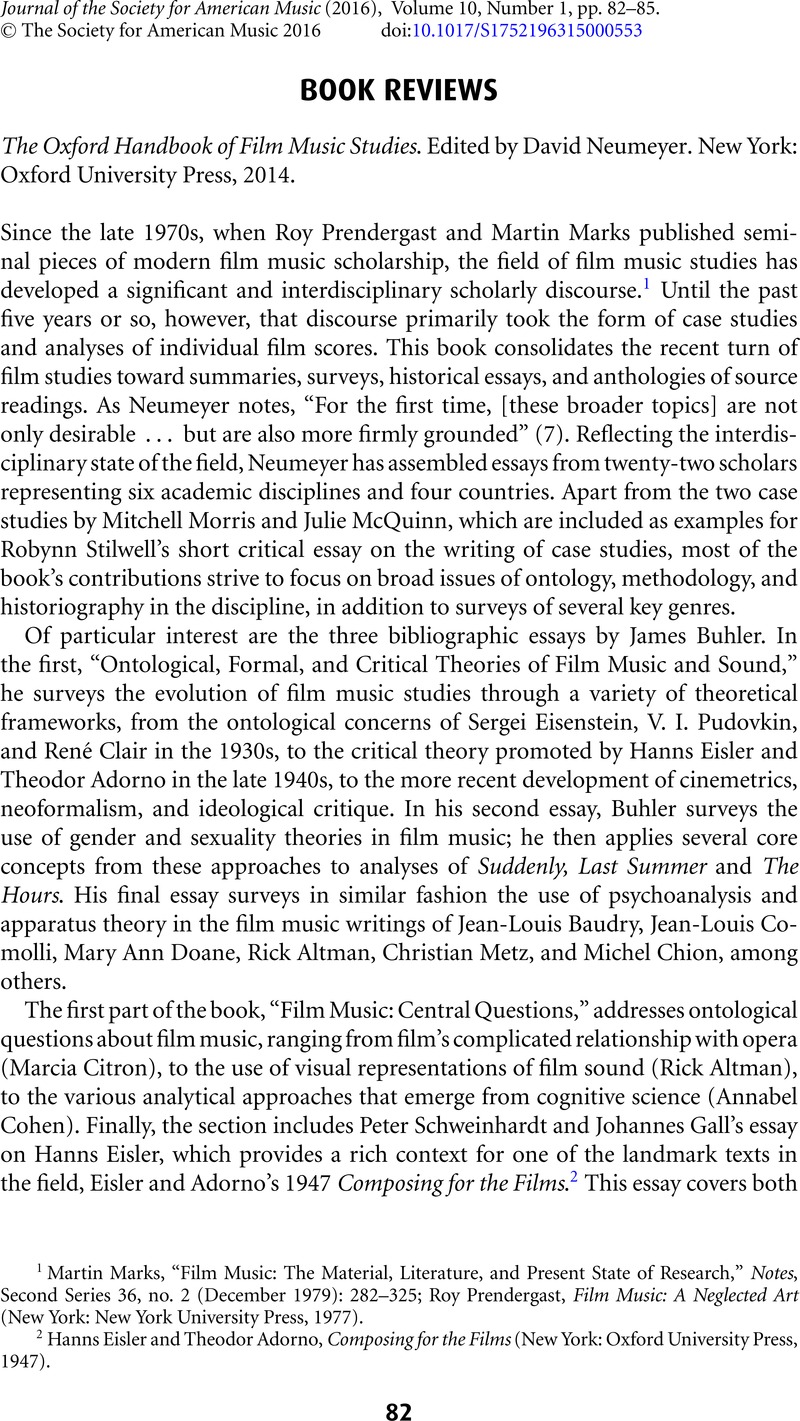No CrossRef data available.
Published online by Cambridge University Press: 12 February 2016

1 Martin Marks, “Film Music: The Material, Literature, and Present State of Research,” Notes, Second Series 36, no. 2 (December 1979): 282–325; Prendergast, Roy, Film Music: A Neglected Art (New York: New York University Press, 1977)Google Scholar.
2 Eisler, Hanns and Adorno, Theodor, Composing for the Films (New York: Oxford University Press, 1947)Google Scholar.
3 See in particular Goldmark, Daniel and Taylor, Yuval, eds., The Cartoon Music Book (Chicago: A Capella, 2002)Google Scholar; and Goldmark, Daniel, Tunes for ’Toons: Music and the Hollywood Cartoon (Berkeley: University of California Press, 2005)CrossRefGoogle Scholar.
4 Collins, Jim, “Television and Postmodernism,” in Channels of Discourse Reassembled: Television and Contemporary Criticism, ed. Allen, Robert C. (London: Routledge, 1992), 327–53Google Scholar; Cook, Nicholas, Analysing Musical Multimedia (New York: Oxford University Press, 1998)Google Scholar; Stevens, Katy, “Battling the Buzz: Contesting Sonic Codes in Buffy the Vampire Slayer,” in Music, Sound, and Silence in “Buffy the Vampire Slayer,” ed. Attinello, Paul, Halfyard, Janet K., and Knights, Vanessa (Aldershot, UK: Ashgate, 2010)Google Scholar; Tagg, Philip, Kojak: Fifty Seconds of Television Music: Toward the Analysis of Affect in Popular Music (New York: Mass Media Music Scholar's Press, 1979)Google Scholar; and Williams, Raymond, Television: Technology and Cultural Form (Middletown, CT, and Hanover, NH: Wesleyan University Press and University Press of New England, 1992)Google Scholar.
5 For one discussion of music in post-strike Hollywood music departments, see Wierzbicki, James, Film Music: A History (New York: Routledge, 2009), 189–208Google Scholar.
6 Of particular note are Mera, Miguel and Burnand, David, eds., European Film Music (Aldershot, UK: Ashgate, 2006)Google Scholar; and Slobin, Mark, ed., Global Soundtracks: Worlds of Film Music (Middletown, CT: Wesleyan University Press, 2008)Google Scholar; in addition to the growing number of journal articles, especially by ethnomusicologists, on film music in India, Central Asia, China, North Africa and the Middle East, and sub-Saharan Africa.